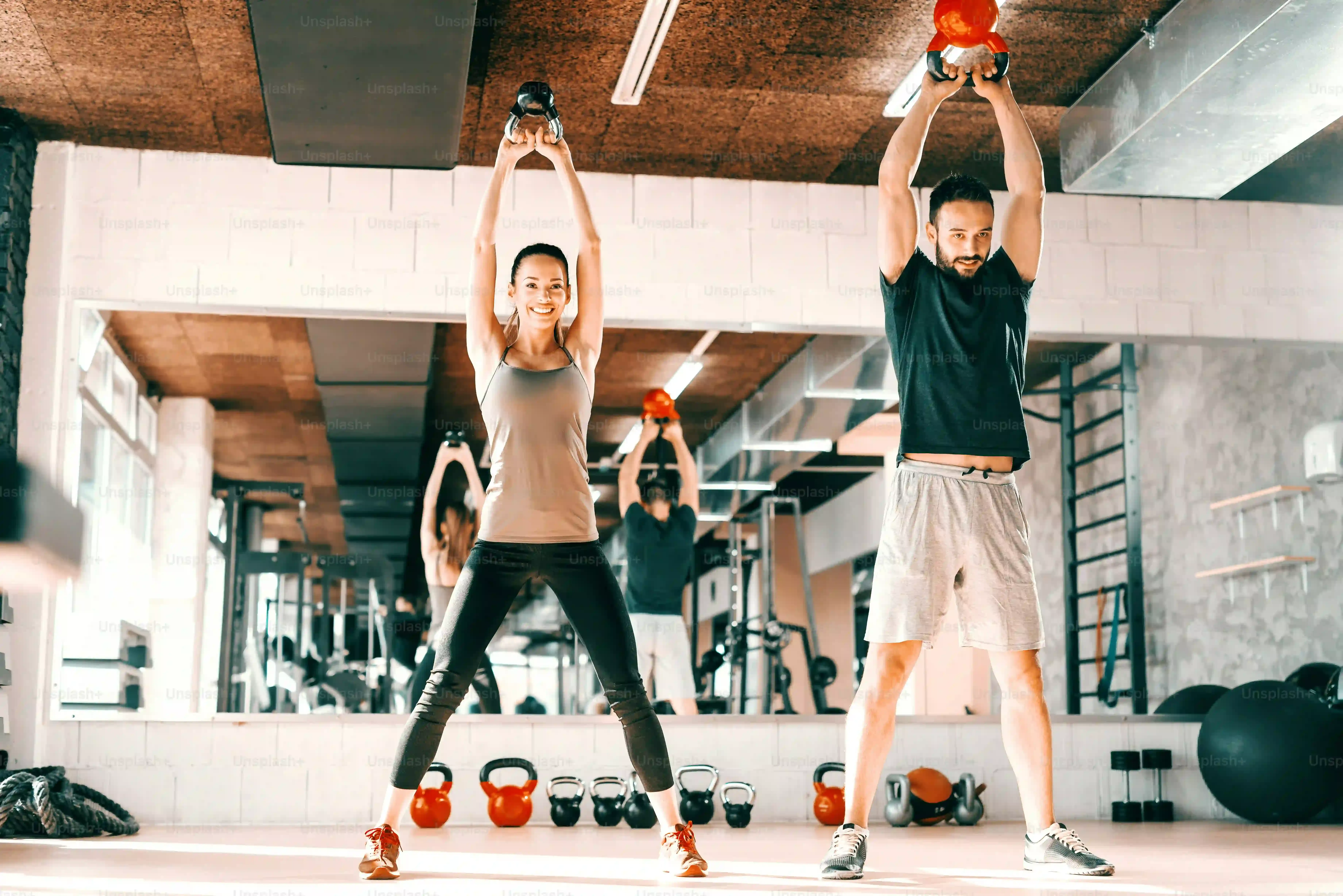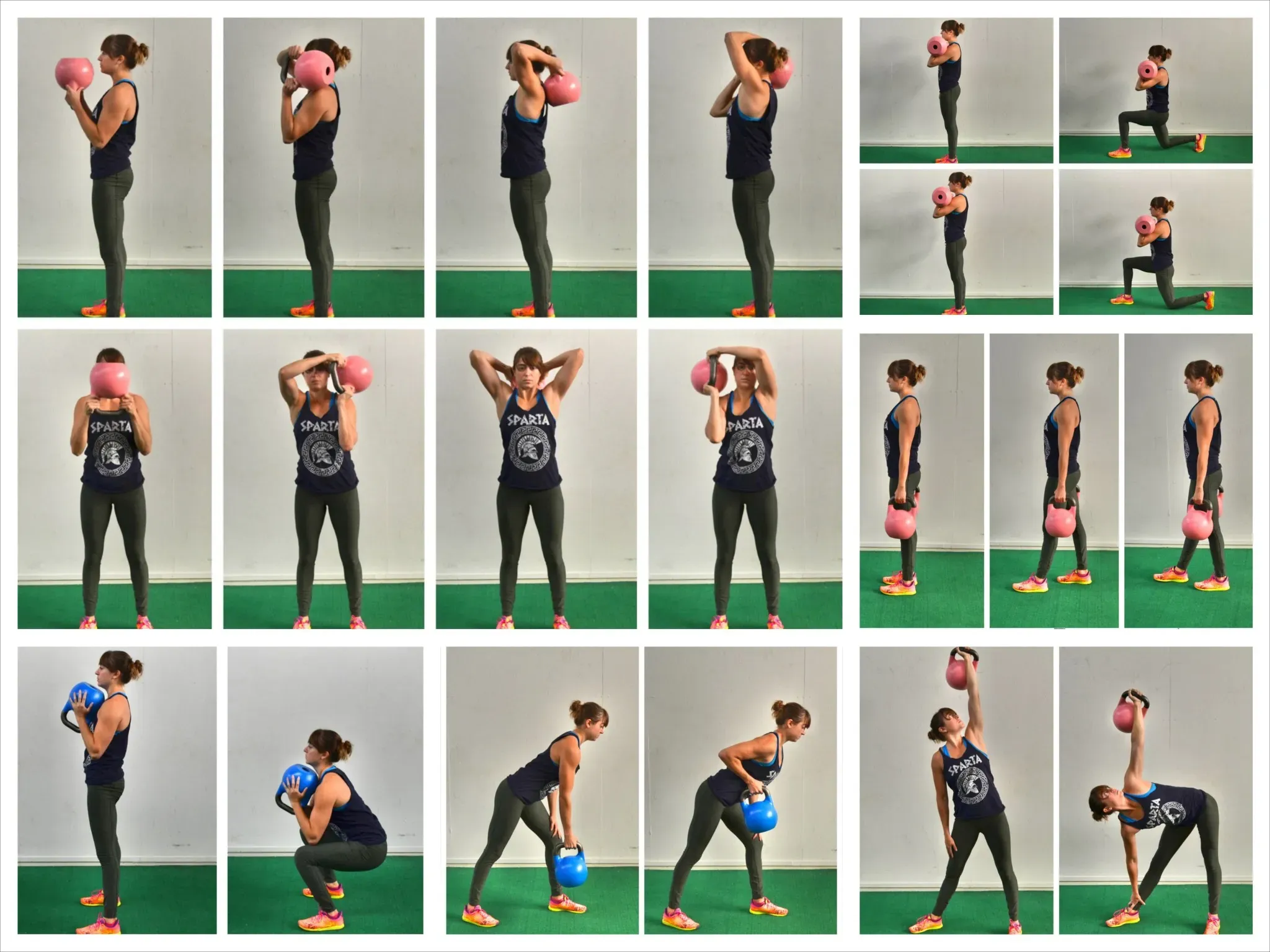Table of Contents
Tired of endless bicep curls with dumbbells that feel like you're just going through the motions? Maybe your triceps have decided they're done responding to standard pushdowns. It’s a common frustration, hitting a wall with your arm training, feeling like you're putting in the work but not seeing the payoff. You want arms that don't just look strong but actually *are* strong, capable of more than just lifting a shaker bottle. This is where shaking things up becomes necessary.
Why Use a Kettlebell for Arm Workouts?

Why Use a Kettlebell for Arm Workouts?
Beyond Static Lifts: Dynamic Arm Training
Look, you can curl a dumbbell or press a barbell all day long. They work, sure, but they often feel a bit…rigid. Like you’re just moving weight up and down in a single plane. A kettlebell, with its off-center mass, completely changes the game. When you lift, lower, or swing a kettlebell, that weight isn't just sitting there. It's pulling you, challenging your balance, and forcing those smaller, stabilizing muscles in your shoulders, elbows, and wrists to fire like crazy. This isn't just about moving a load; it's about controlling a dynamic object, which builds a different kind of functional strength in your arms.
Increased Grip Strength and Versatility
Holding onto a kettlebell handle is different from gripping a standard bar or dumbbell. The handle thickness and the way it hangs naturally work your grip harder on almost every exercise. Ever struggle with the final reps of a heavy set because your grip gives out before the target muscle? Kettlebells help fix that. Plus, the sheer range of motion and exercise variations you can do for your arms with just one or two kettlebells is astounding. You're not limited to basic curls and extensions; you can incorporate presses, rows, cleans, and even dynamic movements that hit your arms as part of a larger chain, making your arm workouts with a kettlebell far more comprehensive.
Still think dumbbells are the only way? Consider this:
- Kettlebells challenge stabilizer muscles more effectively.
- They naturally improve grip strength.
- The unique shape allows for dynamic, fluid movements.
- They integrate arm work into full-body patterns.
- One weight can be used for a multitude of exercises.
Kettlebell Exercises for Stronger Biceps

Kettlebell Exercises for Stronger Biceps
Kettlebell Exercises for Stronger Biceps
Alright, let's talk about those front-of-the-arm muscles everyone seems obsessed with. Building bigger, stronger biceps with a kettlebell isn't just about doing kettlebell curls (though we'll touch on those). Because of the kettlebell's design, many exercises that aren't *just* biceps isolation moves end up hitting them hard as secondary movers or stabilizers. Think about controlling that swinging weight during a clean or stabilizing it overhead during a press – your biceps are absolutely involved. We're going to look at a few key ways to target them directly and indirectly, leveraging that unique kettlebell physics to get a more complete bicep workout than you might expect.
Kettlebell Moves to Build Triceps

Kettlebell Moves to Build Triceps
Overhead Extensions with a Kettlebell
Alright, let's hit the back of those arms, the triceps. These are crucial for pushing power and that horseshoe shape everyone seems to chase. One of the most direct ways to target them with a kettlebell is the overhead extension. Grab the kettlebell by the horns (the sides of the handle) with both hands, lift it overhead, keeping your elbows close to your ears. Slowly lower the kettlebell behind your head by bending your elbows, feeling that stretch in the triceps. Extend your arms back up, squeezing the muscle at the top. The kettlebell's shape feels surprisingly natural for this movement, allowing for a good range of motion. Keep your core tight and avoid letting your elbows flare out.
Close-Grip Kettlebell Push-Ups
Push-ups are a classic triceps builder, and a kettlebell can make them even better, especially for hitting that outer head. Place one kettlebell on the floor and grip the handle with both hands, positioning your hands closer together than a standard push-up. Get into a plank position, keeping your body straight from head to heels. Lower your chest towards the kettlebell handle, keeping your elbows tucked close to your body. Push back up powerfully. The elevated grip and closer hand position put extra emphasis on the triceps. If full close-grip push-ups are too tough, start on your knees. This variation is brutal in the best way.
Thinking about triceps training?
- Triceps make up about two-thirds of your upper arm mass.
- Strong triceps improve your bench press and overhead press.
- Proper form is key to avoid elbow strain.
- Varying grip and angle hits different triceps heads.
Kettlebell Kickbacks (Modified)
Yes, you can do kickbacks with a kettlebell, though the setup is a bit different than with a dumbbell. Hold a lighter kettlebell in one hand. Hinge at your hips, keeping your back straight, almost parallel to the floor. Let the kettlebell hang naturally. Keeping your upper arm stationary and tucked close to your side, extend your forearm back, squeezing the triceps hard at the top of the movement. Slowly lower the kettlebell back to the starting position. It takes a little practice to balance the kettlebell, but that instability adds another layer to the exercise, forcing more control and hitting those smaller stabilizing muscles along with the triceps.
Putting It Together: Sample Arm Workouts with a Kettlebell

Putting It Together: Sample Arm Workouts with a Kettlebell
Designing Your Kettlebell Arm Session
so you've got a few bicep builders and tricep demolishers in your arsenal now. How do you string them together into something that actually feels like a workout and not just a random collection of movements? Think about flow and efficiency. You don't need a dozen exercises; a handful done well is far better than sloppy reps on everything under the sun. A solid arm workout with a kettlebell could involve pairing a bicep exercise with a tricep one, maybe doing them back-to-back as a superset, or structuring it as a circuit where you cycle through a few different moves with minimal rest. The beauty of the kettlebell is how it allows for smooth transitions between exercises if you plan it right, keeping the intensity up and making the most of your time.
A Sample Kettlebell Arm Circuit
Let's put theory into practice. Here’s a simple circuit you could run through. Grab a moderate weight – one you can comfortably manage for 10-15 reps on the weaker exercise. Start with Kettlebell Bicep Curls (traditional or bottoms-up), move straight into Overhead Kettlebell Extensions, then hit Close-Grip Kettlebell Push-ups. Rest for 60-90 seconds, then repeat for 3-4 rounds. This hits the front and back of the arm effectively within a short timeframe. For something more dynamic, you could try Kettlebell Cleans (which work biceps as a secondary muscle) followed by Kettlebell Push Presses (hitting triceps). The key is to pick exercises that complement each other and keep the momentum going.
Here’s a quick look at a possible circuit structure:
- Exercise 1: Kettlebell Bicep Curl (10-15 reps)
- Exercise 2: Overhead Kettlebell Extension (10-15 reps)
- Exercise 3: Close-Grip Kettlebell Push-up (As many clean reps as possible)
- Rest: 60-90 seconds
- Rounds: 3-4
Progressing Your Arm Workouts with a Kettlebell
Once you're comfortable with the movements and can easily hit the upper end of the rep range, it's time to make things harder. Simply adding more reps is one way, but with kettlebells, you have other options. You could increase the weight of the kettlebell, obviously. Or, you could decrease the rest time between exercises or rounds. Another effective method is to perform the exercises unilaterally (one arm at a time), which increases the core and stabilizing demands. You can also introduce more complex lifts like the Clean & Press or the Snatch, which integrate arm work into powerful, full-body movements, taking your arm workouts with a kettlebell to the next level.
Your Arms, Reimagined with a Kettlebell
So, there you have it. Kettlebells aren't just for looking cool while swinging them around; they're legitimately effective tools for building strong, resilient arms. We've covered how they challenge your muscles differently, hit both biceps and triceps with targeted moves, and offer dynamic options for full workouts. Ditching the standard gym fare for a session with a kettlebell might feel awkward at first, like trying to tie your shoes with mittens on, but stick with it. The unique demands of handling the bell will iron out weaknesses and build functional strength that looks good and performs even better. Give these arm workouts with a kettlebell a shot. Your arms will thank you, probably with less complaining than they do now.